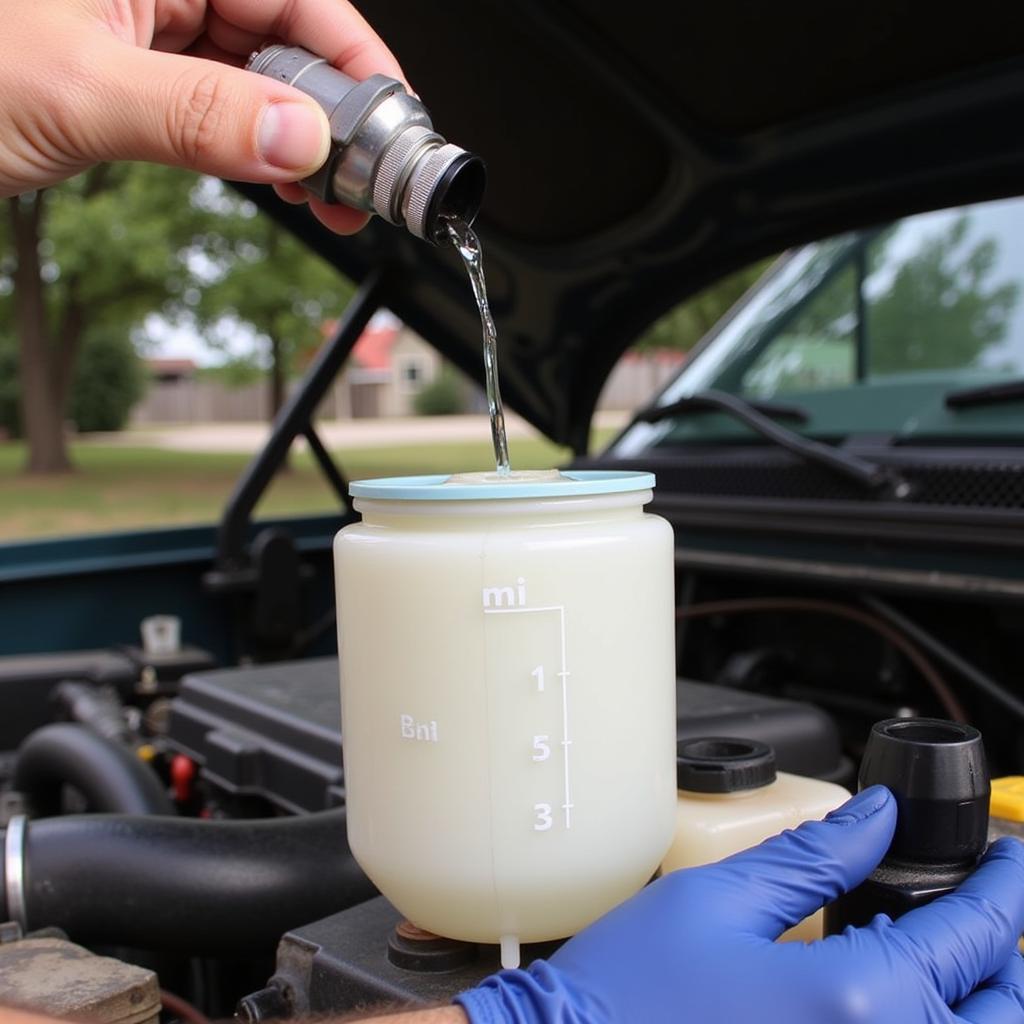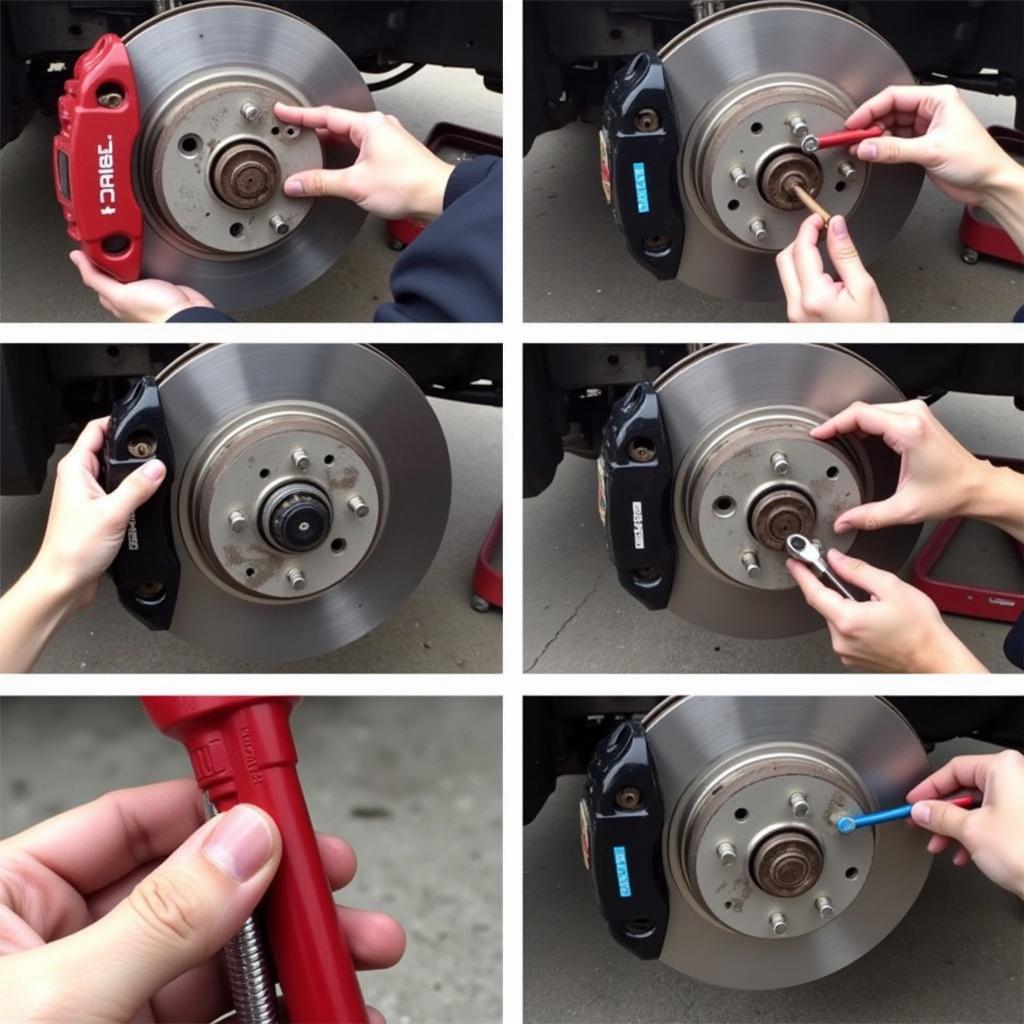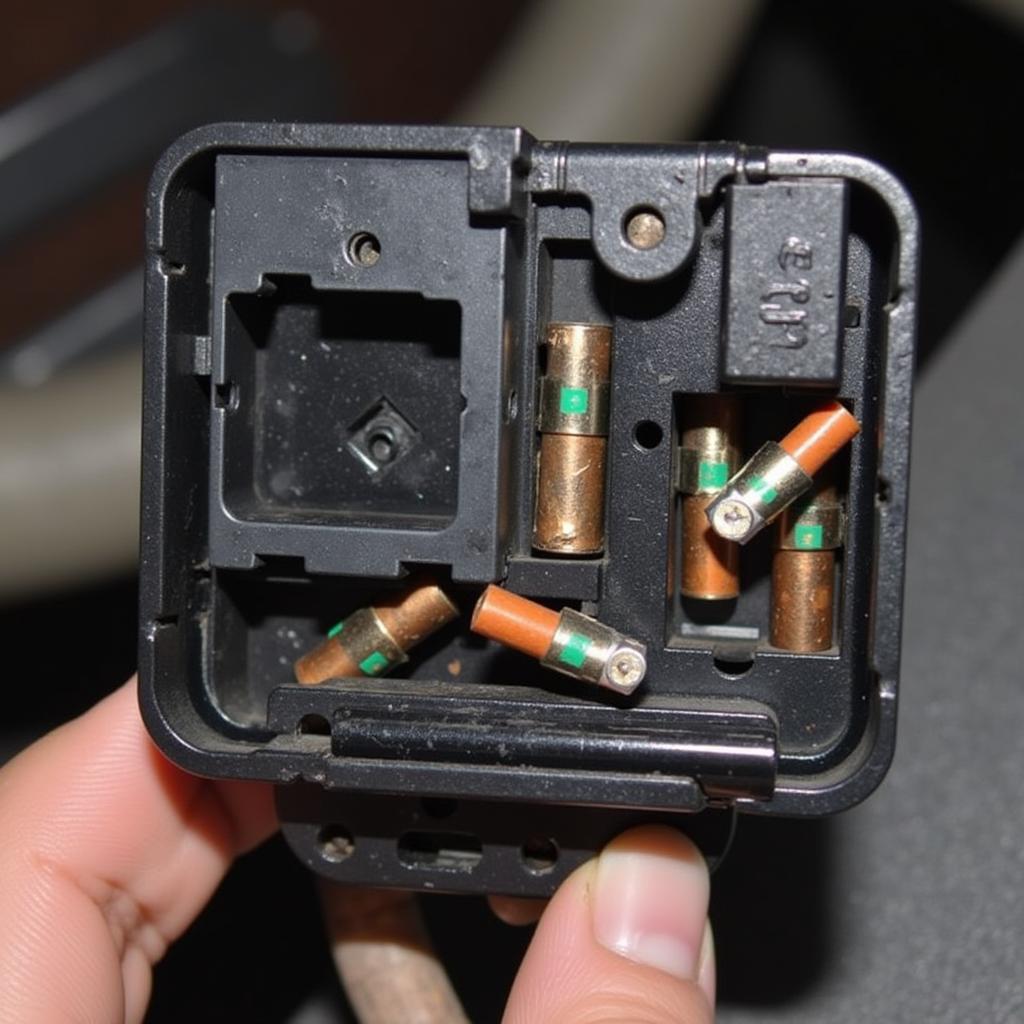The brake warning light on your 1994 Chevy Silverado is a critical safety feature, illuminating to alert you to potential issues within your braking system. Ignoring this light can lead to dangerous driving conditions and costly repairs. This comprehensive guide explores the most common causes of “94 silverado brake warning light problems” and provides practical solutions to help you diagnose and fix them.
If your brake warning light stays on, even when the parking brake isn’t engaged, it signals a problem that needs immediate attention. From low brake fluid to faulty sensors and more serious mechanical failures, understanding the potential culprits is the first step towards a safe and reliable driving experience. One common issue related to this problem also affects the cruise control system. You can learn more about this in our article about 1994 silverado brake warning light cruise control.
Common Causes of a Lit Brake Warning Light
Several issues can trigger the brake warning light on your ’94 Silverado. Here are some of the most frequent culprits:
- Low Brake Fluid: This is often the most straightforward cause. A leak in the brake lines, worn brake pads, or a failing master cylinder can deplete brake fluid levels, triggering the warning light.
- Faulty Brake Light Switch: This switch, located near the brake pedal, activates the brake lights when the pedal is pressed. A malfunctioning switch can cause the warning light to illuminate.
- Worn Brake Pads: As brake pads wear down, the brake fluid level in the master cylinder drops. This can trigger the warning light, indicating it’s time for a brake pad replacement.
- ABS Issues: If your Silverado is equipped with Anti-lock Brakes (ABS), a problem within the ABS system can trigger the warning light. This might involve a faulty sensor, a wiring issue, or a problem with the ABS module itself.
- Parking Brake Engaged: While seemingly obvious, sometimes the warning light is simply a reminder that the parking brake is still engaged.
 Checking Brake Fluid Level in a 1994 Silverado
Checking Brake Fluid Level in a 1994 Silverado
Troubleshooting the Brake Warning Light
Diagnosing the cause of the illuminated brake warning light involves a systematic approach:
- Check the Parking Brake: Ensure the parking brake is fully released.
- Inspect Brake Fluid Level: Check the brake fluid reservoir. If it’s low, add the correct type of brake fluid. If the level drops again quickly, suspect a leak.
- Inspect Brake Lines and Hoses: Look for any signs of leaks, cracks, or damage in the brake lines and hoses.
- Check Brake Pads: Inspect the brake pads for wear. If they are thin, they need replacement.
Solutions and Repairs
Once you’ve identified the cause, address the problem accordingly:
- Low Brake Fluid: Add brake fluid and investigate any leaks. Repair or replace damaged components.
- Faulty Brake Light Switch: Replace the brake light switch. This is a relatively simple and inexpensive repair.
- Worn Brake Pads: Replace the brake pads. It’s recommended to replace them in pairs on the same axle.
- ABS Issues: Diagnose and repair the specific ABS problem. This might involve replacing a sensor, repairing wiring, or addressing issues with the ABS module. For more information on PCM related brake warning light problems, check out 1994 silverado pcm brake warning light.
“Addressing brake issues promptly is crucial,” advises John Davis, a seasoned automotive technician with over 20 years of experience. “Ignoring a brake warning light can lead to more serious and costly repairs down the line.”
Why is my brake light on and my ABS light on?
Both lights illuminating simultaneously can indicate a more complex issue, often related to the ABS system itself, such as a faulty wheel speed sensor or a problem with the ABS module.
Can a bad alternator cause the brake light to come on?
While less common, a failing alternator can sometimes cause voltage fluctuations that trigger the brake warning light.
What does it mean when the brake light flashes?
A flashing brake light can sometimes indicate a more critical issue with the ABS system, requiring immediate attention.
 Replacing Brake Pads on a 1994 Silverado
Replacing Brake Pads on a 1994 Silverado
Conclusion
Addressing “94 silverado brake warning light problems” promptly is vital for your safety and the longevity of your vehicle. By understanding the common causes and following the troubleshooting steps outlined above, you can effectively diagnose and resolve the issue. Remember, regular brake maintenance is key to preventing future problems. If you encounter complex issues or are unsure about any step, consult a qualified mechanic. Don’t delay—a functioning brake system is paramount to safe driving.
FAQ
- How do I check my brake fluid level? Locate the brake fluid reservoir, usually a clear plastic container near the firewall. The fluid level should be between the minimum and maximum markings.
- How often should I replace my brake pads? Brake pad lifespan varies depending on driving habits and conditions. Consult your owner’s manual for recommended replacement intervals.
- What is the ABS system? The Anti-lock Braking System (ABS) prevents wheel lockup during hard braking, maintaining steering control.
- Is it safe to drive with the brake warning light on? No, it’s not safe. The illuminated light indicates a potential problem with your braking system. Have it inspected immediately.
- Can I replace my brake pads myself? While possible, replacing brake pads requires some mechanical knowledge and tools. If unsure, consult a professional.
- How much does it cost to replace a brake light switch? Replacing a brake light switch is a relatively inexpensive repair, typically costing between $20 and $50 for the part, plus labor if professionally installed.
- What should I do if my brake warning light comes on while driving? Pull over safely as soon as possible and investigate the issue. If you’re unsure, call a tow truck.

